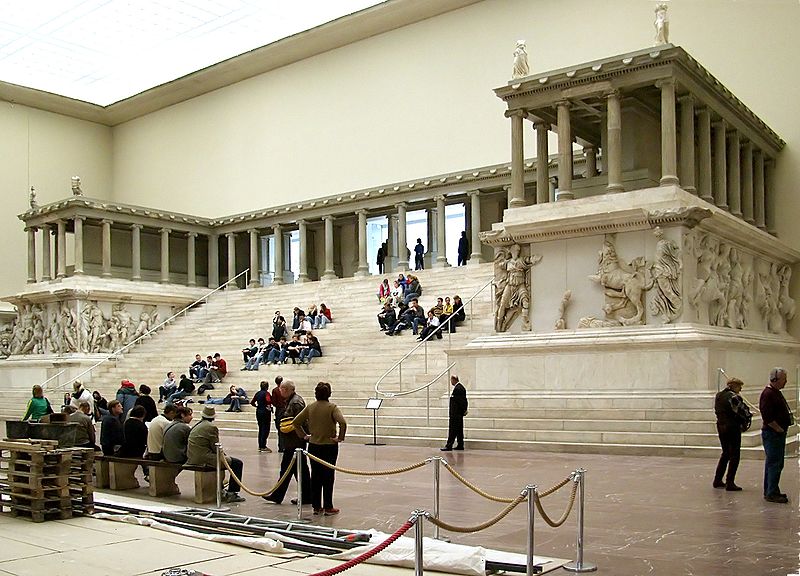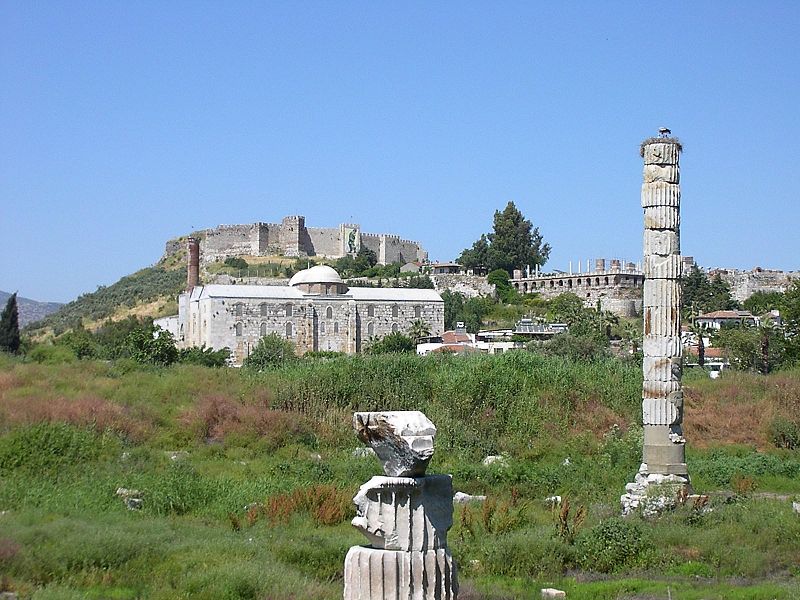 Photo:
Raimond Spekking/Wikipedia
Photo:
Raimond Spekking/Wikipedia
The Bible in Context Classes
For Gateway October 2009
THE BIBLE IN CONTEXT
The Bible in Context discussions are held in Room 350B on Sundays at 9:30 a.m. They are open to everybody, and no previous knowledge (or attendance at previous classes) is required.
October 4, 2009 Satan's Throne ( Pergamum) Revelation 2: 12-17
October 11, 2009 Jezebel (Thyatira) Revelation 2: 18-29
October 18, 2009 I Will Come Like a Thief (Sardis) Revelation 3: 1-6
October 25, 2009 A Pillar in the Temple (Philadelphia) Revelation 3: 7-13
Pergamum
Once a great capital city, with a library second only to the one at Alexandria, Pergamum was capital of Asia until Augustus named Ephesus as capital in its place.
 Photo:
Raimond Spekking/Wikipedia
Photo:
Raimond Spekking/Wikipedia
The Great Altar of Pergamon is in the Pergamon Museum in Berlin. This might be the “Satan’s Throne” mentioned in Revelation. .
Thyatira
It lies in the far west of Turkey, south of Istanbul and almost due east of Athens. It was a center of the dyeing industry, with particular expertise in the production of indigo. Lydia, an entrepreneur who was converted by Paul, and was one of his backers, was from Thyatira (Acts 16: 14-15).
Sardis
Sardis, the capital of the ancient kingdom of Lydia, one of the important cities of the Persian Empire, the seat of a proconsul under the Roman Empire, and the metropolis of the province Lydia in later Roman and Byzantine times. The riches of one of its kings, Croesus, were legendary.
Philadelphia
Philadelphia was in the administrative district of Sardis. In AD 17, the city suffered badly in an earthquake, and the emperor Tiberius relieved it of having to pay taxes. Caligula also helped the city. Under Vespasian, Philadelphia received his cognomen, Flavia.
Trivia Questions October 2009
1. According to the “letter” to Pergamum, who lives there?
a. Antipas
b. Mary, the mother of Jesus
c. Paul
d. Satan
2. The “letter” to Thyatira describes Jesus as having -- :
a. eyes of compassion
b. eyes like fire
c. pierced feet
d. a voice of thunder
3. The letter to Philadelphia contains the first reference to :
a. the Siege of Jerusalem
b. the Great Fire of Jerusalem
c. the New Jerusalem
d. the temple in Hieropolis
Answers to Trivia Questions September 2009
1. The “Nicolaitans”
a. were founded by Nicholas of Antioch
b. approved of adultery
c. ate food sacrificed to idols
d. are otherwise unknown
Possibly all of the above! Church fathers identified the founder of the Nicolaitan sect denounced in the “letters” to Ephesus and Pergamon, as the Nicholas of Acts 6:5. The Nicolaitans are roundly denounced as adulterers and eaters of “food offered to idols”. This second charge was sometimes leveled against Paul’s followers, and his “don’t ask” policy described in I Corinthians would support such a charge. The Nicolaitans may be one of the libertarian sects of early Christianity, who did not help the reputation of the growing religion.
2. Ephesus contained one of the Wonders of World :
a. The Mausoleum
b. The Temple of Diana
c. The Hanging Gardens
d. The Pyramids
Answer: b. The Temple of Diana – the Artemision. The temple was a center of pilgrimage, and contributed greatly to the economy of the city. St. Paul was attacked by the local artisans for having threatened their livelihood by questioning the temple. The theater into which his companions were dragged still exists.
3. The message to Smyrna refers to the “crown of life.” This may relate to :
a. a prize given at the civic games
b. the great buildings overlooking the city
c. the imperial status of the city
d. a great statue
Answer: b. Possibly the reference is to a group of buildings known as the “Crown of Smyrna”

All that remains today of the Artemision, the great Temple of Diana, that was one of the Seven Wonders of the World.
(Photo by Wikipedia)
Updates to the calendar, links to source texts, and lesson quizzes are at http://ccpc.petercombes.com